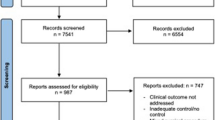Abstract
Background
Post-operative pain management is a critical component of perioperative care. Patients at risk of poorly controlled post-operative pain may benefit from early measures to optimize pain management. We sought to identify risk factors for post-operative pain and opioid consumption in patients undergoing liver resection.
Methods
This is a multi-institutional prospective nested cohort study of patients undergoing open liver resection. Opioid consumption and pain scores were collected following surgery. To estimate the effects of patient factors on opioid consumption (oral morphine equivalents—OME) and on pain scores (NRS-11), we used generalized linear models and multivariable linear regression model, respectively.
Results
One hundred and fifty-three patients who underwent open liver resection between 2013 and 2016 were included in the study. The mean patient age was 62.2 years, and 43.3% were female. Younger patients were significantly more likely to use more opioids in the early post-operative period (16.7 OME/10 years, p < 0.001). Patient factors that were significantly associated with increased NRS-11 pain scores also included younger patient age (difference in pain score of 0.3/10 years with cough and 0.2/10 years at rest, p < 0.01 for both) as well as a history of analgesic use (difference in pain score of 0.9 with cough and 0.6 at rest, p < 0.01 and p = 0.07, respectively).
Conclusion
Younger patients and those with a history of analgesic use are more likely to report higher post-operative pain and require higher doses of opioids. Early identification of these patients, and measures to better manage their pain, may contribute to optimal perioperative care.





Similar content being viewed by others
References
McMahon AJ, Russell IT, Ramsay G et al (1994) Laparoscopic and minilaparotomy cholecystectomy: a randomized trial comparing postoperative pain and pulmonary function. Surgery 115(5):533–539
Ballantyne JC, Carr DB, deFerranti S et al (1998) The comparative effects of postoperative analgesic therapies on pulmonary outcome: cumulative meta-analyses of randomized, controlled trials. Anesth Analg 86(3):598–612
Beattie WS, Badner NH, Choi P (2001) Epidural analgesia reduces postoperative myocardial infarction: a meta-analysis. Anesth Analg 93(4):853–858
Morrison RS, Magaziner J, McLaughlin MA et al (2003) The impact of post-operative pain on outcomes following hip fracture. Pain 103(3):303–311
Thiels CA, Anderson SS, Ubl DS et al (2017) Wide variation and overprescription of opioids after elective surgery. Ann Surg 266(4):564–573. https://doi.org/10.1097/SLA.0000000000002365
Sun EC, Darnall BD, Baker LC, Mackey S (2016) Incidence of and risk factors for chronic opioid use among opioid-naive patients in the postoperative period. JAMA Intern Med 176(9):1286–1293. https://doi.org/10.1001/jamainternmed.2016.3298
Waljee JF, Li L, Brummett CM, Englesbe MJ (2017) Iatrogenic opioid dependence in the united states: are surgeons the gatekeepers? Ann Surg 265(4):728–730. https://doi.org/10.1097/SLA.0000000000001904
Daoust R, Paquet J, Moore L et al (2017) Incidence and risk factors of long-term opioid use in elderly trauma patients. Ann Surg. https://doi.org/10.1097/sla.0000000000002461
Sekhri S, Arora NS, Cottrell H et al (2017) Probability of opioid prescription refilling after surgery: does initial prescription dose matter? Ann Surg. https://doi.org/10.1097/sla.0000000000002308
Hill MV, Stucke RS, McMahon ML, Beeman JL, Barth RJ (2017) An educational intervention decreases opioid prescribing after general surgical operations. Ann Surg 1:1. https://doi.org/10.1097/sla.0000000000002198
Behman R, McHardy P, Sawyer J, Lam-McCulloch J, Karanicolas PJ (2014) Medial open transversus abdominal plane catheter analgesia: a simple, safe, effective technique after open liver resection. J Am Coll Surg 218(5):e91–e94. https://doi.org/10.1016/j.jamcollsurg.2013.12.054
Karanicolas P, Cleary S, McHardy P et al (2014) Medial open transversus abdominis plane (MOTAP) catheters for analgesia following open liver resection: study protocol for a randomized controlled trial. Trials 15(1):241. https://doi.org/10.1186/1745-6215-15-241
Kennedy-Hendricks A, Gielen A, McDonald E, McGinty EE, Shields W, Barry CL (2016) Medication sharing, storage, and disposal practices for opioid medications among US adults. JAMA Intern Med 176(7):1027–1029. https://doi.org/10.1001/jamainternmed.2016.2543
Macintyre PE, Jarvis DA (1996) Age is the best predictor of postoperative morphine requirements. Pain 64(2):357–364
Thomas T, Robinson C, Champion D, McKell M, Pell M (1998) Prediction and assessment of the severity of post-operative pain and of satisfaction with management. Pain 75(2–3):177–185
Glasson JC, Sawyer WT, Lindley CM, Ginsberg B (2002) Patient-specific factors affecting patient-controlled analgesia dosing. J Pain Palliat Care Pharmacother 16(2):5–21
Chang K-Y, Tsou M-Y, Chan K-H, Sung C-S, Chang W-K (2006) Factors affecting patient-controlled analgesia requirements. J Formos Med Assoc 105(11):918–925. https://doi.org/10.1016/S0929-6646(09)60177-7
Kulkarni AR, Pusic AL, Hamill JB et al (2017) Factors associated with acute postoperative pain following breast reconstruction. JPRAS Open 11:1–13. https://doi.org/10.1016/j.jpra.2016.08.005
Bohnert ASB, Valenstein M, Bair MJ et al (2011) Association between opioid prescribing patterns and opioid overdose-related deaths. JAMA 305(13):1315–1321. https://doi.org/10.1001/jama.2011.370
Shah A, Hayes CJ, Martin BC (2017) Characteristics of initial prescription episodes and likelihood of long-term opioid use—United States, 2006–2015. MMWR Morb Mortal Wkly Rep 66(10):265–269. https://doi.org/10.15585/mmwr.mm6610a1
Katz J, Seltzer Z (2009) Transition from acute to chronic postsurgical pain: risk factors and protective factors. Expert Rev Neurother 9(5):723–744. https://doi.org/10.1586/ern.09.20
Acknowledgements
Support for the randomized controlled trial of MOTAP catheter analgesia, the data from which were used for this study, was provided by the Innovation Fund of the Alternative Funding Plan from the Academic Health Sciences Centres of Ontario. Dr. Karanicolas is supported by a Canadian Institute of Health Research (CIHR) New Investigator Award. Dr. Clarke is supported by a University of Toronto, Department of Anesthesia Research Merit Award.
Funding
Funding for the randomized controlled trial from which data were used in this nested cohort study was provided by the Academic Health Science Centre (AHSC) Alternative Funding Plan (AFP) Innovation Grant
Author information
Authors and Affiliations
Corresponding author
Ethics declarations
Conflict of interest
The authors declare that they have no conflict of interest.
Additional information
Publisher's Note
Springer Nature remains neutral with regard to jurisdictional claims in published maps and institutional affiliations.
Rights and permissions
About this article
Cite this article
Behman, R., Cleary, S., McHardy, P. et al. Predictors of Post-operative Pain and Opioid Consumption in Patients Undergoing Liver Surgery. World J Surg 43, 2579–2586 (2019). https://doi.org/10.1007/s00268-019-05050-7
Published:
Issue Date:
DOI: https://doi.org/10.1007/s00268-019-05050-7




